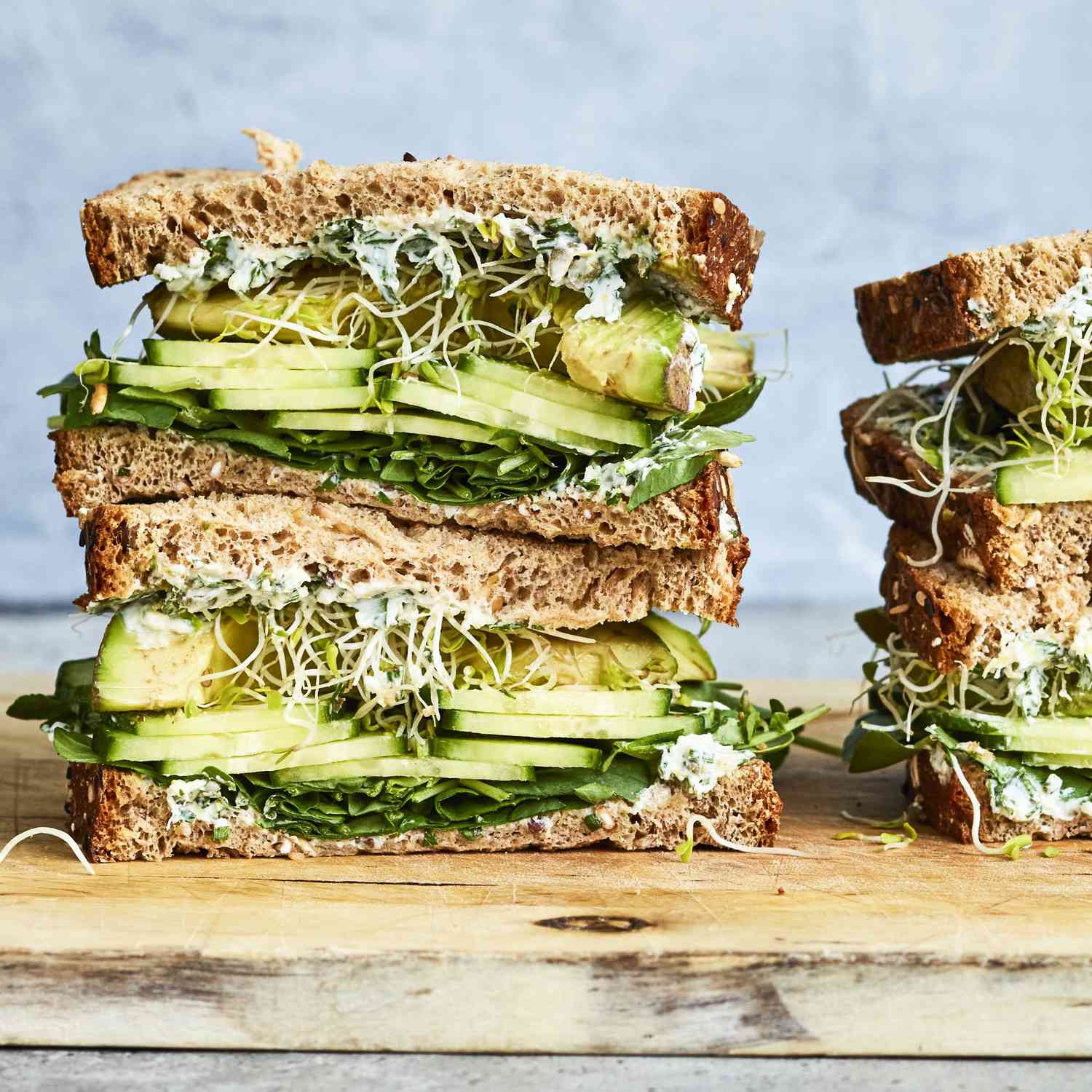These days, it seems like digestive drama has become the status quo. According to a 2018 article published in The American Journal of Gastroenterology. But it doesn’t have to be that way.
Illustrated recipe: Green Goddess Sandwich
In addition to avoiding foods that cause you distress and relieving discomfort with over-the-counter medications, you can also give your body a boost in the digestion department by eating more foods containing natural digestive enzymes.
“Digestive enzymes occur naturally in the body to help break down what we eat so that important nutrients get to the right places for proper use,” says one dietitian. Brittany Berman, RDN. However, if the body does not produce enough of certain enzymes (for example, the enzymes needed to break down lactose in dairy products), this can slow down the digestion process and lead to gastrointestinal symptoms such as gas, bloating and diarrhea .
Fortunately, many foods contain these important enzymes, the majority of which are best eaten raw to maximize digestive benefits. “Many enzymes are very fragile and can be easily disrupted by chemical, pH, or temperature changes,” Berman says.
Below are nine foods that can help boost your digestion, along with how to seamlessly add them to your diet:
1. Pineapple
“Pineapples contain bromelain, a mixture of enzymes that help digest protein,” says a Connecticut dietitian. Alyssa Lavy, Dt.P.. Since bromelain, like other digestive enzymes, is heat sensitive, increasing your raw pineapple quota is the best way to maximize your intake. Try blending pineapple into your smoothies, adding pineapple chunks to your salads, or using pineapple as a meat tenderizer. Try this green pineapple smoothie.
2. Lawyers
If high-fat meals tend to get you in trouble, consider lawyers your new partner in crime. They contain lipase, an enzyme needed for fat metabolism and digestion, says a Kansas dietician Cheryl Mussatto, Dt.P.author of The nourished brain. Bonus: avocados are super easy to incorporate into your diet: add them to your morning smoothie, top your salad with avocado cubes, enjoy some guac, or break out your favorite avocado toast recipes. Want inspiration? Opt for this avocado and egg toast.
3. Bananas
Best known as a go-to source of potassium, bananas are also a source of enzymes like amylase and maltase, says Mussatto. Amylase helps break down complex carbohydrates, like those found in breads and cereals, while maltase helps break down malt sugar found in carbohydrate foods, like starches and vegetables. Top your cereal or oatmeal with bananas, blend one into a smoothie, or eat one straight the next time you feel like a snack. Want more? Try one of these 26 healthy recipes to make with a diet of ripe bananas.
4. Mangoes
Like bananas, mangoes also contain amylase, which makes it easier for your body to break down starches into smaller carbohydrate molecules and absorb them. Mussatto recommends sliced or chunk mango as a refreshing snack on its own or as a green salad topping for a healthy and delicious pop of color. This mango and avocado salad is ideal when paired with grilled chicken or fish.
5. Papaya
The enzyme found in papaya is called papain, which helps break down proteins, Lavy says. Heat can damage papain, so be sure to consume papaya raw for maximum digestive benefits, for example, papaya wedges as a breakfast side dish or cubed and added to salads and smoothies. To learn how to cut papaya the right way, check out these instructions.
6. Raw honey
Among other things, honey contains digestive enzymes called diastases, invertases and proteases. These help break down starches, sugars, and proteins, respectively. “Eating honey in raw form allows your body to produce all the digestive benefits,” Berman says. “If you buy processed honey, it’s often heated during processing, which can destroy beneficial enzymes.” Drizzle it on toast, stir it into yogurt, or use it to sweeten your oatmeal. Spread this homemade honey butter on whole grain toast.
7. Kefir
“Kefir is basically fermented milk with yeast cultures, lactic acid bacteria, and acetic acid bacteria added,” Berman says. It contains the digestive enzymes lipase (which breaks down fat), lactase (breaks down lactose) and proteases (proteins). You can drink it straight, add it to oats overnight, or mix it into your next smoothie bowl. Never had kefir before? This berry-kefir smoothie is a great recipe to start with because the sweet berries help balance out the flavor of the kefir.
8. Sauerkraut
Thanks to the fermentation process, sauerkraut is an excellent source of various digestive enzymes that can help your body break down proteins, fats, and starches. If you’re buying from the store, buy sauerkraut made with water and salt, not vinegar, says Mussatto. (This means the sauerkraut has been fermented, not marinated, leaving the digestive enzymes intact.) Eat it on its own or as a side to any meal. You can also make sauerkraut at home. Try this simple sauerkraut recipe.
9. Ginger
Not only does ginger contain an enzyme called zingibain that helps the body digest protein, but it can also help increase the production of digestive enzymes in the body, Berman says. This is in addition to the role it already plays in relieving nausea. Enjoy ginger as a tea, add it to your next stir-fry, or grate it into citrus drinks for an extra zest. Feeling adventurous? Go for these turmeric and ginger shots.
